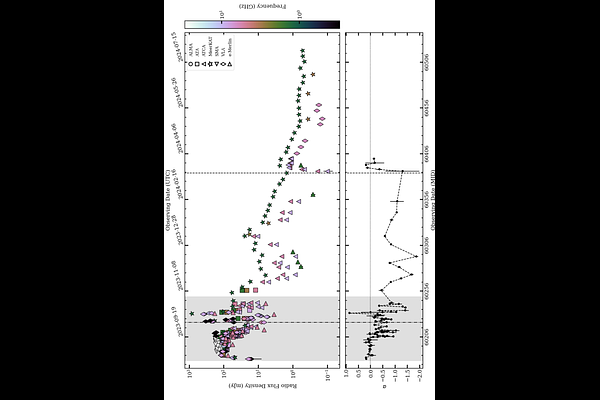Comprehensive Radio Monitoring of the Black Hole X-ray Binary Swift J1727.8$-$1613 during its 2023$-$2024 Outburst

Comprehensive Radio Monitoring of the Black Hole X-ray Binary Swift J1727.8$-$1613 during its 2023$-$2024 Outburst
Andrew K. Hughes, Francesco Carotenuto, Thomas D. Russell, Alexandra J. Tetarenko, James C. A. Miller-Jones, Arash Bahramian, Joe S. Bright, Fraser J. Cowie, Rob Fender, Mark A. Gurwell, Jasvinderjit K. Khaulsay, Anastasia Kirby, Serena Jones, Elodie Lescure, Michael McCollough, Richard M. Plotkin, Ramprasad Rao, Saeqa D. Vrtilek, David R. A. Williams-Baldwin, Callan M. Wood, Gregory R. Sivakoff, Diego Altamirano, Piergiorgio Casella, Stephane Corbel, David R. DeBoer, Melania Del Santo, Constanza Echiburu-Trujillo, Wael Farah, Poshak Gandhi, Karri I. I. Koljonen, Thomas Maccarone, James H. Matthews, Sera B. Markoff, Alexander W. Pollak, David M. Russell, Payaswini Saikia, Noel Castro Segura, Aarran W. Shaw, Andrew Siemion, Roberto Soria, John A. Tomsick, Jakob van den Eijnden
AbstractThis work presents comprehensive multi-frequency radio monitoring of the black hole low-mass X-ray binary Swift J1727.8$-$1613, which underwent its first recorded outburst after its discovery in August 2023. Through a considerable community effort, we have coalesced the data from multiple, distinct observing programs; the light curves include ${\sim} 10$ months and 197 epochs of monitoring from 7 radio facilities with observing frequencies ranging from (approximately) 0.3$-$230GHz. The primary purpose of this work is to provide the broader astronomical community with these light curves to assist with the interpretation of other observing campaigns, particularly non-radio observing frequencies. We discuss the phenomenological evolution of the source, which included: (i) multiple radio flares consistent with the launching of discrete jet ejections, the brightest of which reached $\sim$ 1 Jy; (ii) temporally evolving radio spectral indices ($\alpha$), reaching values steeper than expected for optically-thin synchrotron emission ($\alpha {<} -1$) and emission with significant radiative cooling ($\alpha < -1.5$). We have published a digital copy of the data and intend for this work to set a precedent for the community to continue releasing comprehensive radio light curves of future low-mass X-ray binary outbursts.